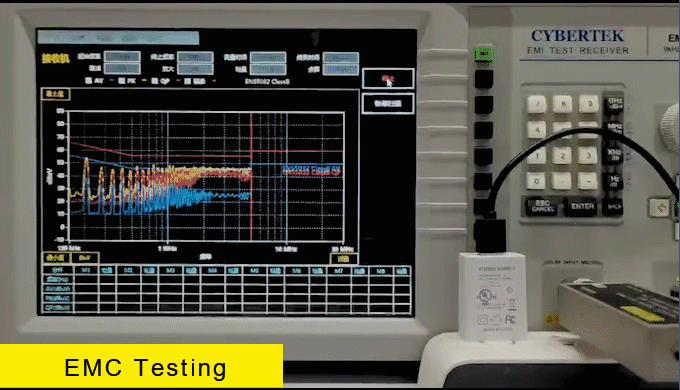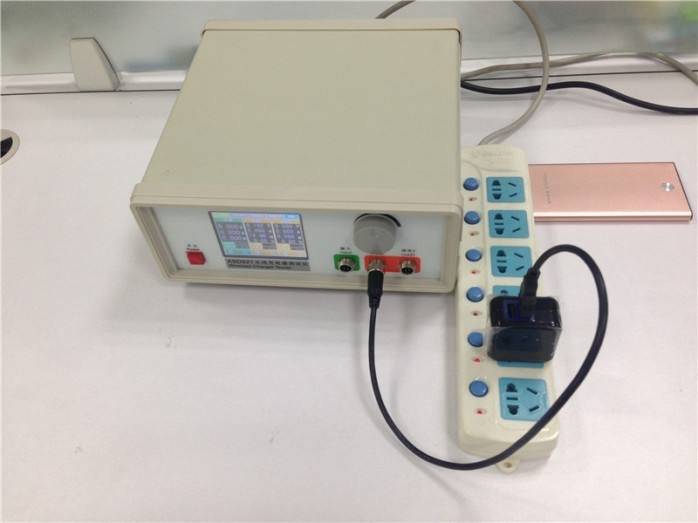As people's consumption concepts become more and more rational, they no longer blindly pursue price concessions and powerful functions, but pay more attention to product safety issues. How to obtain products with complete quality and harmless to users has become an element that consumers are gradually paying attention to. Products that pass safety testing have become one of the choices consumers consider when buying mobile phone accessories.

What's a Regulatory Test?
Safety regulations are requirements for product safety in product certification, including safety requirements for product parts and safety requirements for finished products. In order to pass the safety certification, various tests are carried out. The safety certification is a product certification to ensure the safety of users and the environment.
Countries all over the world have their own safety requirements, and products must meet these requirements before they can be sold on the market.
Many countries have also implemented compulsory certification, such as China's CCC and EU's CE. There are also some certification marks that have a good market reputation. Many manufacturers require their suppliers to carry out relevant safety certifications to enhance their market safety image, such as UL mark, VDE mark, Nemko mark, GS mark, CE mark, FCC mark, ROHS mark.
Generally, the seven major safety factors included in electrical and electronic products are: electric shock, energy related hazards, fire, heat related hazards, mechnical hazards, and radiation. (Radiation), chemical hazards. In the process of safety certification, the product needs to meet the above points.
The original safety regulations include input sockets, output sockets, Y capacitors, X capacitors, fuses, power switches, selector switches, EMI filters, optocouplers, relays, pvc wires, heat sink sleeves, labels, insulating tape, etc.

Common safety regulations test items:
1. Input test
The purpose of the safety input test is to examine whether the input meets the requirements of the product during normal operation and whether the input circuit can withstand the current required by the product when the product is designed. It is stipulated in the product standard that the input current of the maximum power consumption cannot be greater than 110% of the nominal value of the product. This nominal value also tells the user the minimum current required for the product to work safely, so that the user must prepare such an electrical environment before using the device.
2. Stability test of safety signs
The warning signs for the safety of users must be stable and reliable, and they should not become vague after a period of use, which may cause users to misuse them and cause danger, or directly lead to danger. So we need to test this stability. The safety standard stipulates that: test 15S with water, then 15S with gasoline, and the logo should not be blurred.
3. Capacitor discharge test
For a device with a pluggable power cord, the power cord is often unplugged from the socket, and the power plug of the socket is unplugged, which is often played by someone or placed arbitrarily. This leads to a problem. When the power plug is unplugged, it is charged, and this electricity disappears with time. If this time is too long, it will cause electric shock to the person playing the plug, and the randomly placed power plug will damage other equipment. Or the device itself. Therefore, each complete machine safety standard makes strict regulations on this time. We need to consider this time when designing products, and we need to measure this time for product safety certification.
4.Circuit stability test
1) SELV circuit SELV circuit is a safe ground voltage circuit. This circuit is safe for users. For example, the DC output terminal of a mobile phone charger to a mobile phone is safe and can be touched at will without danger.
Note: SELV circuits have different interpretations in different standards. For example, the interpretation in IEC60364 is different from that in IEC60950-1. Therefore, you need to pay attention to which standard SELV is under, and its dangers are also different. A SELV circuit needs to meet special requirements before it can be a SELV circuit. These requirements are that, in the case of a single fault, it still meets the requirements of a SELV circuit. Therefore, each SELV circuit needs to be tested under a single fault to prove that the SELV circuit is stable. During the test, single faults are introduced one by one to monitor the SELV circuit.
2) Limited power source circuit
Since the output power of the limited power source circuit is very small, in the known experience, they will not cause a fire hazard. Therefore, in the safety standard, the enclosure of this type of circuit has been specifically reduced. Their flame retardant rating is UL94V. -2. Therefore, these types of circuits need to be measured to prove that they are limited power source circuits.
3) Current-limiting source circuit After the AC220V circuit passes through a certain resistance, there is no danger to people. So what is the resistance, and what are the requirements for resistance. Maybe everyone doesn't know. There is this provision in the safety standard, and this provision is the current-limiting source circuit. Current-limiting source current requires that under normal circuit conditions and a single fault, the outflow current is below the safety limit, and it will not cause danger to people to be less than 0.25mA. The resistance to isolate the primary and secondary circuits is an impulse resistance that is required to meet special standards.
5. Grounding continuous test
Some equipment must be grounded, otherwise there will be dangerous voltage on the surface that it can touch. These dangerous voltages must be discharged through grounding. The safety test stipulates how much current and how long should be used, the measured resistance must be less than 0.1 ohm, or the voltage drop should be less than 2.5V.
6. Moisture test
The humidity test is to simulate the safety performance of the equipment under extreme tightness. After the equipment is manufactured, it can operate safely under any humidity, and the user cannot be told that the equipment cannot be used because it is the rainy season and the humidity is high. Therefore, in the design, it must be considered that the equipment meets the safety requirements under the foreseeable humidity, so the humidity test is necessary. The test requirements vary according to the standards, and there are a few differences.
7. Torque test
The torsion test is that the external wires of the equipment are often bent and deformed by external forces during use. This test is the number of bends that the test wire can withstand, and it will not be broken due to external forces during the product life cycle, and the AC220V wire will be exposed.
8. Stability test
In normal use of equipment, there are often different external forces. For example, people will lean on it for higher equipment, or someone will climb it during maintenance; for shorter equipment, which looks like a stool, some people may stand on it. Wait on it. Because the equipment is subjected to these external forces, the equipment is not designed with thorough consideration to cause the equipment to collapse, overturn and other hazards. Therefore, these tests need to be done after the equipment design is completed. Check that they meet safety requirements.
9. Shell force test
The equipment will be subjected to various external forces during use. These external forces may deform the housing of the equipment. These deformations may cause the internal danger of the equipment, or the indicators may not meet the requirements. Therefore, these effects must be considered when designing equipment, and these indicators must be tested during safety certification.

10. Drop test
Small devices or desktop devices, in normal use, may fall from hands or workbenches to the ground. These drops may cause the internal safety indicators of the equipment to fail to meet the requirements. Therefore, this influence must be considered when designing equipment, and these indexes need to be tested during safety certification. The requirement is that the function can be lost after the device is dropped, but it should not cause danger to the user.

11. Stress release test
If there are dangerous circuits inside the equipment, and the equipment is in normal use, if the casing is deformed, which will cause the danger to be exposed, this is not allowed. Therefore, these effects must be considered when designing equipment, and these indicators must be tested during safety certification.

12. Battery charge and discharge test
If there is a rechargeable battery inside the device, you need to do a charge-discharge test, and a charge test and an overcharge test under a single fault. This is because the device is in normal use, charging and discharging, and the device is faulty, but the main function has not been lost, and the user will not find the device fault. In this case, the charging and discharging requirements are safe and cannot happen because of this. Dangers such as explosion.
13. Equipment temperature rise test (internal and external surface temperature under normal operation)
In the safety test, the temperature rise test is the most important. Although the equipment and instruments used in the test are the same as those in the artificial climate environment test, the test items and test devices and purposes are quite different. The artificial climate environment mainly examines the adaptability and reliability of the equipment. The safety regulations examine whether the equipment can work safely.

14. Ball pressure test
As the insulating material or plastic parts supporting dangerous voltages, a ball pressure test is required to ensure that the plastic parts have sufficient support strength when the dangerous voltage parts work at high temperatures. The test temperature is the highest temperature plus 15°C, but not less than 125°C. The ball pressure time is to maintain 1H at the required temperature.
15. Touch current test
Contact current is often referred to as leakage current. This current is strictly controlled, and each safety standard has strict regulations. Therefore, this current must be strictly controlled in the design and tested during product certification.
16. Withstand voltage test
Withstand voltage test is also called withstand voltage test or high voltage test. It is mainly used to investigate the withstand capability of equipment insulation and whether the designed insulation meets the design requirements. Different insulations have different test voltages. Withstand voltage tests are all tested after humidity treatment, in order to examine the equipment's ability to withstand humidity.

17. Exception Test
Abnormal test is divided into single failure test, wrong use test, and common abnormal use test. Single failure test means that the equipment is required to be safe when the equipment is in a fault state. Misuse means that the equipment has an adjustment device or other device, and the test is performed when the position or condition is not correct, and the equipment is required to be safe. This is to allow the loss of equipment function. Common abnormal usage test: Refers to some additional decorative parts that people like beauty and these decorations are extremely unfavorable tests for the heat dissipation of the device. For example, put a dust cover on the TV and forget to take it off when using the TV. The mobile phone is packed in a mobile phone bag or the like.
18. Safety design
Safety design is designed to meet the safety requirements of the product in the equipment product. The specific requirements of each standard are different, but the purpose is to protect the safety of users.

Seeing this, everyone should have a clear understanding of the scope of safety certification and testing content. The chargers we produce will be tested in accordance with the standards before shipment, and meet the certification requirements of various countries, and can be used with confidence.


